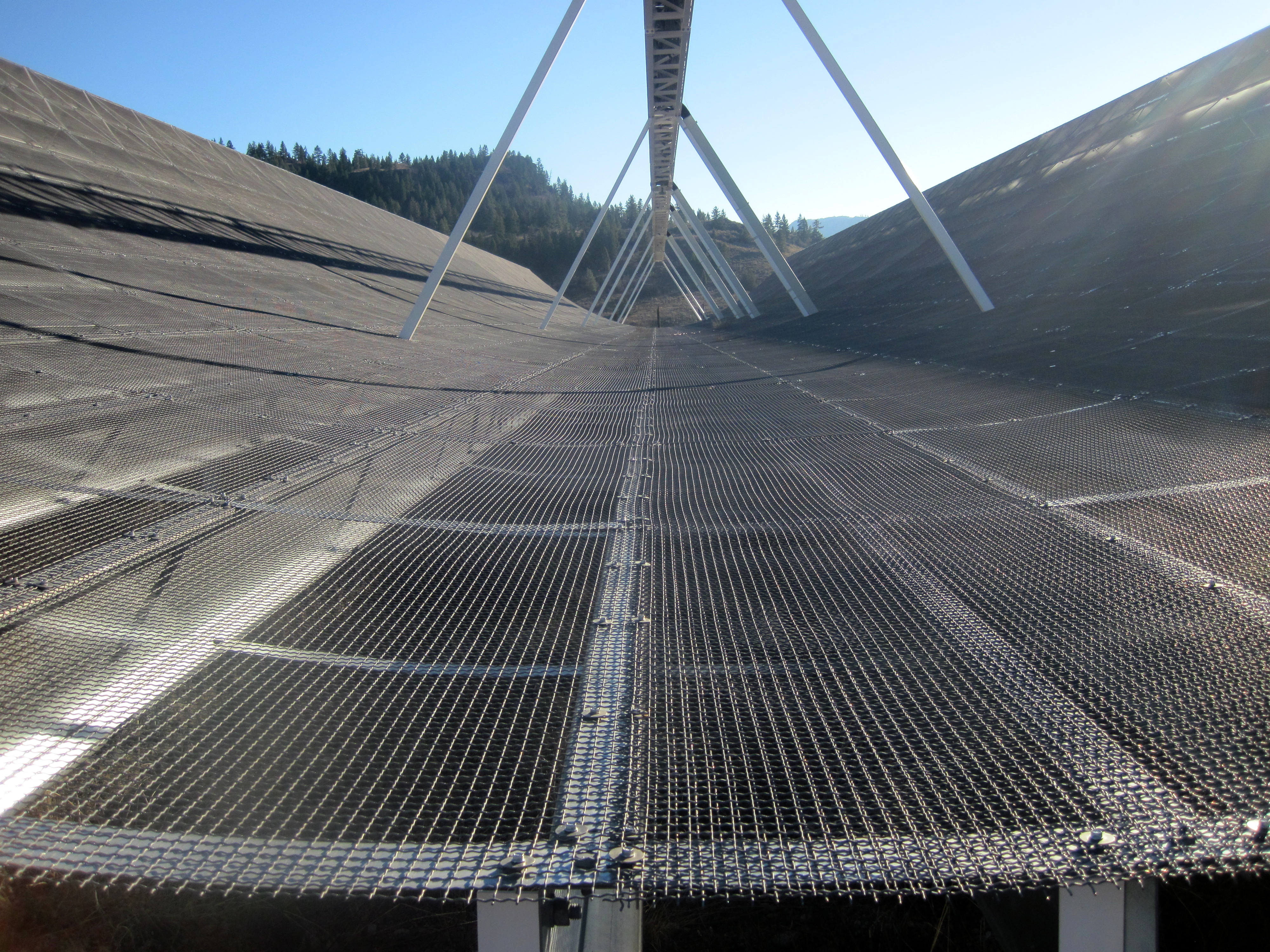CHIME telescope detects second-ever repeating fast radio burst
January 9, 2019

January 9, 2019

A team of scientists in Canada has found the second repeating fast radio burst (FRB) ever recorded, providing new clues about the brief, puzzling pulses of radio energy from far outside our galaxy.
The repeating FRB was one of 13 new bursts detected in just two weeks by the Canadian Hydrogen Intensity Mapping Experiment (CHIME), a radio telescope designed and built by scientists at the University of British Columbia, McGill University, the University of Toronto, the Perimeter Institute for Theoretical Physics and the National Research Council of Canada.
The discoveries, described in two papers in Nature, were presented today at the American Astronomical Society meeting in Seattle.
“Until now, there was only one known repeating FRB. Knowing that there is another suggests that there could be more out there. And with more repeaters and more sources available for study, we may be able to understand these cosmic puzzles—where they’re from and what causes them,” said Ingrid Stairs, a member of the CHIME team and an astrophysicist at UBC.
“With CHIME mapping the entire northern hemisphere every day, we’re bound to find more repeaters over time,” said Stairs. “Knowing where they are will enable scientists to point their telescopes at them, creating an opportunity to study these mysterious signals in detail.”
Studying fast radio bursts is challenging because they’re rare and mostly one-offs.
The repeating burst was one of a total of 13 bursts detected during a pre-commissioning run in the summer of 2018. The discoveries are particularly noteworthy for the fact that the telescope, located in British Columbia’s Okanagan Valley, was running at a fraction of its full capacity.
“We’re very excited to see what CHIME can do when it’s running at full capacity,” said Deborah Good, a PhD student in physics and astronomy at UBC who is part of CHIME’s FRB team. “At the end of a year we may have found 1,000 more bursts. Our data will break open some of the mysteries of FRBs.”
While most FRBs have been spotted at wavelengths of a few centimetres, the latest FRBs were detected at wavelengths of nearly a metre—which opens up new lines of inquiry, according to the CHIME team.
“The environment of the FRB has a much larger effect on the shape of the signals at long wavelengths,” said Good.
“Seeing these bursts with CHIME will give us a good idea about what FRBs are like and where they come from, by showing us more about how their brightness changes at different frequencies and what’s happening to the signal on its way to Earth,” she added.
Tom Landecker, a CHIME team member from the National Research Council, said the findings provide rich information about the sources and environments that generate fast radio bursts.
“[We now know] the sources can produce low-frequency radio waves and those low-frequency waves can escape their environment, and are not too scattered to be detected by the time they reach the Earth. That tells us something about the environments and the sources. We haven’t solved the problem, but it’s several more pieces in the puzzle,” he said.
“The findings are just the beginning of CHIME’s discoveries,” added Stairs, the UBC astrophysicist. “In the next phase, we plan to capture the full high-resolution data stream from the brightest bursts, which will let us better understand their positions, characteristics and magnetic environments. The next few years will be very exciting.”
“Observations of fast radio bursts at frequencies down to 400 megahertz,” M. Amiri et al, Nature, published online Jan. 9, 2019.
“The source of a second repeating fast radio burst,” M. Amiri et al, Nature, published online Jan. 9, 2019.
We honour xwməθkwəy̓ əm (Musqueam) on whose ancestral, unceded territory UBC Vancouver is situated. UBC Science is committed to building meaningful relationships with Indigenous peoples so we can advance Reconciliation and ensure traditional ways of knowing enrich our teaching and research.
Learn more: Musqueam First Nation